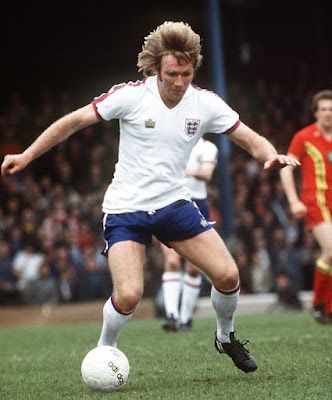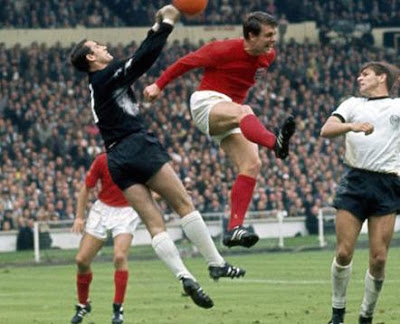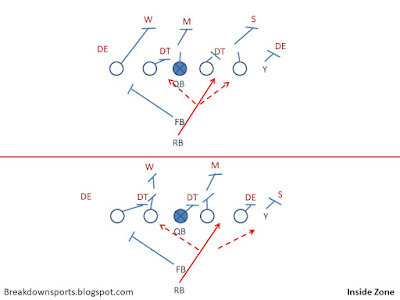Monday, May 31, 2021
2021 NCAA Division I Men's Lacrosse Championship TV & Radio Schedule
Sunday, May 30, 2021
2021 NCAA Division I Women's Lacrosse Championship Final TV Schedule
Saturday, May 29, 2021
2021 NHL Stanley Cup Playoffs 2nd Round TV & National Radio Schedule
2020-21 UEFA Champions Championship TV & Streaming Schedule
2021 Bundesliga Relegation Playoff, Leg 2 TV, Streaming, & Radio Schedule
ESPN+ SAP:
2021 NCAA Division I Men's Lacrosse Championship Semifinals TV & Radio Schedule
Friday, May 28, 2021
2021 NCAA Division I Women's Lacrosse Championship Semifinals TV Schedule
Sunday, May 23, 2021
East of England All-Time Team
Gary Bailey started his career with Wits University in Johannesburg. He paid his own fare to Manchester for a trial with Manchester United. He established himself as United goalkeeper in the late 1970s. He won FA Cup medals in 1983 and 1985. He later played with Kaizer Chiefs, before retiring in 1990. For England, he was only capped twice due to playing at the same time as Peter Shilton and Ray Clemence. He was the backup goalkeeper at the 1986 World Cup Finals.
 |
| David James |
Danny Mills was known for his career with Leeds United between 1999 and 2004. He played a part in helping Leeds reach the 2000/01 Champions League Semi-final. He also played Norwich, Charlton Athletic, Hulls City, Derby County and Manchester City. Between 2001 and 2004, he was capped 19 times. He was the starting rightback at the 2002 World Cup Finals.
 |
| Gareth Southgate |
Ashley Young started his career at Watford. In January 2007, he transferred to Aston Villa. He established himself in the first team at Villa Park and won the PFA Young Player of the Year award in 2009. In 2011, Young signed for Manchester United for an undisclosed fee. He has gone on to win every trophy available in English football. From 2007 to 2008, Young has 39 caps England. He was on the 2018 World Cup team as well as Euro 2012.
 |
| Ashley Young |
 |
| Kieron Dyer |
 |
| Kevin Philips |
Watson played 505 times for West Ham between 1920 and 1936. Hyde is the club's record goalscorer with 326 goals with 298 league and 28 FA cup. 203 of his league goals were from 295 top flight appearances. He played one season (1935–36) with Southampton before retiring. With England, he had 5 caps, scoring 4 goals between 1923 and 1930.
Sir Geoff Hurst was best known for scoring a hat trick at the 1966 World Cup Final against West Germany. He also played in following World Cup Finals in Mexico. He remains the only man to score a hat-trick in a World Cup final. He played 490 times in total for England. His club career was spent mainly with West Ham and Stoke City. He also had a stint in NASL with Seattle Sounders in 1976.
Wednesday, May 19, 2021
Film Review: 2000 Purdue vs Northwestern
In this Twitter moment, I looked at some of the schematic choices featuring Purdue and Northwestern from 2000. This is an interesting moment for college football and the Big Ten specifically. Both teams were very early to the spread revolution, but utilized spread quite differently.
Here's the box score from the game: LINK
2020 Purdue at Northwestern thread: https://t.co/0P237gNKNV
— Space Coyote (@SpaceCoyoteBDS) May 14, 2021
Thursday, May 13, 2021
History and Evolution: Power O - Bonus - "Power" within the Zone Architecture
It always bugged me when at Michigan, Rich Rod would call his Lead Outside Zone play "Power". Football terminology is notoriously inconsistent from program-to-program, where the same word can mean very different things. But Power had established a sort of agreement and consistency, it is down blocks on the frontside with a backside puller, a true gap/man scheme. Yet here was Rich Rod calling Outside Zone "Power." It made my head hurt for a long time, until one day I was looking through the Joe Gibbs's playbook, and the rationale behind it struck me.
As I noted in the History and Evolution Series, power itself was originally focused on the Power Sweep, as a sort of variant to the inside run and option series. As Option Teams (often Wing T types) moved more toward zone blocking in the 70s, Power had to be adapted in ways to fit what they did. Rarely did these teams pull within the formation, it was mostly zone blocking, occasional traps as a change up, and maybe a lead pull around the edge.
So thinking within the sense of not pulling blockers (even around the edge), you ask how you can still get outside the formation. The answer becomes outside zone blocking with a lead back trying to open up the alley. And you get this, from Joe Gibbs's playbook (which also contained traditional Power O by then).
"Power" for lead Outside Zone is a Joe Gibbs holdover. Here he has drawn up "Power" and "Power O" pic.twitter.com/Ul0JhBHCQn
— Space Coyote (@SpaceCoyoteBDS) August 13, 2020
Now, the idea behind it and how it converges with more traditional power isn't too difficult to understand. When you think of traditional Power, you think of a kickout block, a puller from the backside, and frontside combo blocks to the backside of the play.
The easiest way to picture this Gibbs's "Power" is to think of Inside Zone first, specifically, Lead Inside Zone. On Lead Inside Zone, your FB is responsible for the front side LB, the same player the backside puller targets in traditional Power O. As your FB is responsible for the front side LB, the zone combos, which are typically vertical in nature, now work back one person at the 2nd level. In other words, the frontside combos now work back at the second level.
So your traditional zone looks like this (here with a split block from the FB):
And becomes something more like this:
And what it effectively looks like is single back Power O, where the FB replaces the backside puller.
Now remember, for the zone teams, what they were really working into their playbook was the Power Sweep, but it's not all together different in concept, except the blocking up front is Outside Zone blocking. This essentially means instead of the combos working further playside, they'll be more vertical in Lead Outside Zone, but the idea is the same, the aiming point is one player back as the FB accounts for the playside LB as a lead blocker (taking the role that the backside Guard traditionally plays as a lead blocker in Power O).
And that is how Rich Rod and Joe Gibbs came about "Power" as an outside zone play and it looked like this (here with a fake split flow in the backfield).
And that's how this becomes "Power" (with a fake split flow from the RB) pic.twitter.com/0k5oAPkz3U
— Space Coyote (@SpaceCoyoteBDS) August 13, 2020
Here it is with multiple backs near the goal line
And protected by an early version of a same side pop pass in the slot (note: the outside WR runs a hitch route that is used if playside DBs are dropping off to handle the inside verticals)
Note: Both retained traditional Power O within their offenses, but at least in the case of Rich Rod, was not favored compared to zone blocking.
History and Evolution - Power
Part I - The Power Series Origins
Part II - Off Tackle Power Earns the Name Power
Part III - The Modern Era of Power Diversity
Tuesday, May 11, 2021
South East England All-Time Team
 |
| Cuthbert Ottaway and Robert Barker played in the first ever international match in 1872 |
Black English players
United Kingdom World Cup 1970
United Kingdom World Cup 1982
England World Cup 1974
England After 1966 All-Time Team
Ditchburn made his senior debut for the Spurs in a wartime league match in 1940. At the end of the war, he returned to Tottenham. He went on to play in an unbroken run of 247 matches between April 1948 and March 1954. Tottenham won promotion as Division Two champions in 1949–50 and the First division league title the following year. Capped 6 times and went to the WC Finals in 1950.
Woodley signed for Chelsea in 1931, making his debut the same year. Woodley was a member of the glamorous Chelsea side of the 1930s, playing alongside the likes of Hughie Gallacher, Alex Jackson and Alec Cheyne. Woodley won nineteen caps for England - all consecutive, a record at the time - and in an era when there was stiff competition from Harry Hibbs, George Tweedy and Frank Swift.
 |
| Peter Storey |
 |
| Gary Pallister |
David Sadler started his career with Maidstone United, but signed a professional contract with Manchester United in 1963, helping the club win the 1965 and 1967 First Division Football League championships as well as the 1968 European Cup. He left United in 1974 after scoring 27 goals for the club to join Preston North End, who were being managed by Sadler's former team-mate Bobby Charlton. Capped 4 times.
Mick Mills holds the record for appearance with Ipswich Town. He became the captain of Ipswich in 1971, where he formed a close relationship with manager Bobby Robson. It was Ipswich's greatest era, winning the 1978 FA Cup and the 1981 UEFA Cup. He also played with Southampton and Stoke City. Mills was capped 42 times between 1972 and 1982. He played both rightback and left back for England. He captained England at the 1982 World Cup Finals.
 |
| Mick Mills |
His father, grandfather and three brothers were all professional footballers as well. His brother Dave, played international football for Wales. From 1963 to 1975, he played for Chelsea. He later played for Arsenal. He made 714 First Division appearances, an English top division record for an outfield player and second only to goalkeeper Peter Shilton. He was only capped once.
 |
| Dele Alli |
Bobby Tambling was Chelsea's all-time top scorer for 47 years, with 202 goals in all competitions until Frank Lampard surpassed this total on 11 May 2013. Tambling remains Chelsea's all-time top scorer in league competition with 164 goals. After enjoying a successful career in the Football League during the 1960s and early 1970s, Tambling moved to Ireland. He subsequently played for several Irish clubs. Capped 3 times.
Currie started with Watford in 1967. He was transferred to Sheffield United in 1968 and went on to score 54 goals in 313 appearances and was also made captain by manager Ken Furphy in March 1974. In September 2014, as part of the club's 125th Anniversary celebrations, he was named Sheffield United's Greatest Ever Player. In 1976, he moved to Leeds United. His curling shot against Southampton F.C. In 1978 won ITV's The Big Match Goal of the Season that year. Capped 17 times.
 |
| Tony Currie |
Osgood was a legend with Chelsea. He helped them to win the Cup Winners' Cup in 1970. Despite his successes with Chelsea, he only earned 4 caps. Sir Ramsey is rumoured to dislike him for his playboy lifestyle. He was a member of the 1970 World Cup squad, making two appearances against Czechoslovakia and Romania as a substitute. Near the end of his career, he played for Southampton, Norwich, Philadelphia Fury and a return to Chelsea.
From 1962 to 1966, Martin Chivers played with Southampton. He moved to Tottenham Hotspurs in 1968, breaking the tran sager record at the time. During the 1971–72 campaign, Chivers hit the best form of his career, netting 44 times in 64 first team appearances. He scored eight times in 11 UEFA Cup matches in 1972, in which Tottenham became champion. He was indicted to Tottenham's Hall of Fame. Chivers was capped 24 times for England.
 |
| Martin Chivers |













